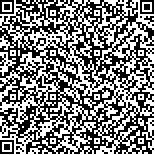Archive > Volume 46 Issue 5 > 2020,46(5):716-724. DOI:10.7519/j.issn.1000-0526.2020.05.012 Prev Next
Characteristics of Road Surface Temperature in Beijing and Its Statistic Forecasting Model
- Article
- Figures
- Metrics
- Preview PDF
- Reference
- Related
- Cited by
- Materials
Abstract:
This article analyzes the diurnal variation of road surface temperature in the different weather conditions for winter and summer in Beijing. Based on the 2012-2015 data of the road stations and the corresponding forecasting model outputs, the multiple linear regression statistical forecasting models 〖JP2〗are built to predict the road mini〖JP〗mum temperature in winter and the maximum temperature in summer with the different correlative factors from the selected 5 representative road stations. Then the best forecasting model is chosen to make an assessment for winters and summers from 2016 to 2017. The results show that there exists a significant diurnal variation for the road surface temperature, suggesting that the road surface temperature is obviously different under different kinds of weather conditions.〖JP〗 The road surface temperature is correlated to air temperature, atmospheric radiation and sunshine duration. In addition, the prediction accuracy of summer forecasting models for the various weather conditions is improved. Under the fair to cloudy condition, the errors of forecasting models could be controlled within the ± 2℃ in winter and ±3℃ in summer, but it is worse under the other weather conditions. The models show a better performence in terms of the minimum temperature forecast in winter compared to the maximum temperature forecast in summer.
Keywords:
Project Supported:
Clc Number:


Mobile website









